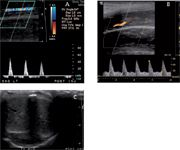Article
Peyronie's disease: Use of grafts in surgical reconstruction
Surgeons who care for men with Peyronie's disease must be familiar with grafting procedures in order to offer the full spectrum of options.
Peyronie's disease (PD), a prevalent condition in middle-aged men, significantly impacts multiple components of sexual function and reduces quality of life as a result of pain, deformity, and loss of penile erection.


Evaluation
The decision to proceed with surgical correction of PD depends on careful evaluation of the history, disease severity, and functionality of each patient. Whether a course of oral, topical, or intralesional therapy is indicated prior to surgical intervention is beyond the scope of this report. Regardless, experts require a period of plaque stabilization prior to surgical correction, generally ranging from 3 to 12 months without change in curvature. This usually is paralleled by a resolution of painful erections, although in certain cases severe curvature or girth restriction may cause persistent pain in the absence of disease progression.
The sexual history must identify bona fide ED and differentiate it from loss of rigidity and buckling due to girth narrowing in the form of a lateral indentation or symmetrical "hourglass" deformity. The physical examination assesses plaque characteristics and penile extensibility. Palpation may localize discrete plaques, although the erect configuration of the penis better determines surgical strategy than does examination. Therefore, patient photographs or in-office intracavernosal injection are essential to appropriate planning. Large dense plaques may indicate ossification, a rare indication of end-stage PD. Measurement of stretched penile length helps manage expectations around penile size commonly voiced by men with PD.
Deciding to graft


The decision to graft the tunica albuginea should not be undertaken lightly in the face of the surgical risks of penile numbness, venoocclusive dysfunction, and complete ED. The potential benefits of grafting include a lower risk of penile shortening compared to plication procedures; more effective correction of severe angulation; and the improvement of girth, providing better penile stability to resist buckling. Large grafts of any material pose a greater risk of CVOD; thus, when plaque excision is required, only the most favorable candidates should be grafted. Patients with pre-existing ED, arterial insufficiency, or CVOD should be considered better suited for penile implant surgery with or without grafting.
Newsletter
Stay current with the latest urology news and practice-changing insights — sign up now for the essential updates every urologist needs.















